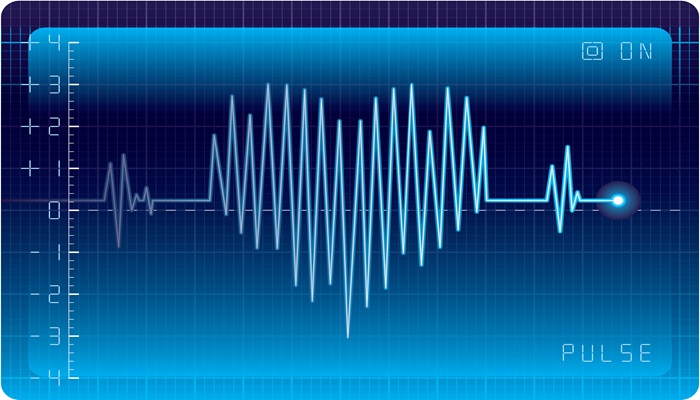Arrhythmia, a term encompassing a range of heart rhythm disorders, affects millions of people worldwide. Characterized by irregular heartbeats that may be too fast, too slow, or erratic, arrhythmias can vary widely in severity and impact on health.
In this comprehensive guide, we delve into the prevalence, types, causes, diagnosis, treatment, and outlook for arrhythmia, providing essential information for understanding this complex cardiovascular condition.
Definition And Types of Arrhythmia
Arrhythmia refers to abnormal heart rhythms that disrupt the heart’s natural electrical activity. The heart’s electrical system coordinates each heartbeat, ensuring it beats regularly and efficiently. When this system malfunctions, arrhythmias can occur, affecting heart rate and rhythm. Types of arrhythmias include:
Atrial Fibrillation (AFib): The most common type, characterized by rapid, irregular atrial contractions.
Ventricular Tachycardia: Fast, abnormal heartbeats originating in the heart’s lower chambers.
Bradycardia: Slow heart rate, often below 60 beats per minute.
Premature Ventricular Contractions (PVCs): Extra heartbeats that disrupt regular rhythm.
SEE ALSO: Can Theobromine Cause Heart Palpitations?
How Common Is Arrhythmia
Arrhythmias are prevalent globally, with varying rates across different populations and age groups. According to the American Heart Association (AHA), millions of people in the United States alone are affected by arrhythmias. Statistics indicate:
Global Prevalence: Estimates suggest that approximately 2-3% of the general population may have atrial fibrillation, the most common arrhythmia worldwide.
Age-Specific Prevalence: The incidence of arrhythmias increases with age, particularly among those over 60 years old.
Risk Factors for Arrhythmia
Several factors contribute to the development of arrhythmias, including:
Age: Older adults are more susceptible.
Heart Conditions: Such as coronary artery disease, heart valve disorders, or prior heart attack.
High Blood Pressure: Hypertension can strain the heart.
Diabetes: Increases the risk of cardiovascular complications.
Lifestyle Factors: Such as smoking, excessive alcohol consumption, or drug abuse.
Impact on Health
The impact of arrhythmia on health can range from mild inconvenience to life-threatening complications. Symptoms vary depending on the type and severity of the arrhythmia and may include:
Palpitations: Sensation of rapid or irregular heartbeat.
Dizziness or Lightheadedness: Especially during episodes of arrhythmia.
Fatigue: Due to inefficient pumping of blood.
Chest Pain: Resulting from reduced blood flow to the heart.
Stroke or Heart Failure: Serious complications associated with untreated or severe arrhythmias.
Diagnosis And Evaluation
Diagnosing arrhythmia typically involves:
Electrocardiogram (ECG or EKG): Records heart’s electrical activity.
Holter Monitor: Continuous ECG recording over 24-48 hours.
Event Monitor: Records heart activity during symptoms.
Echocardiogram: Ultrasound of the heart to assess structure and function.
Stress Test: Evaluates heart function during physical activity.
Treatment Options
Treatment strategies aim to manage symptoms, restore normal heart rhythm, and reduce the risk of complications.
Depending on the type and severity of arrhythmia, options may include:
Medications: Antiarrhythmic drugs to control heart rhythm.
Cardioversion: Electrical shock to restore normal rhythm.
Ablation Therapy: Catheter-based procedure to destroy abnormal heart tissue.
Implantable Devices: Such as pacemakers or implantable cardioverter-defibrillators (ICDs) to regulate heart rhythm.
Prognosis And Long-Term Management
The prognosis for individuals with arrhythmia depends on several factors, including the type of arrhythmia, underlying heart conditions, and response to treatment. With proper management, many people can lead normal lives. Long-term management involves:
Regular Follow-Up: Monitoring heart health and adjusting treatment as needed.
Lifestyle Modifications: Adopting a heart-healthy diet, maintaining a healthy weight, exercising regularly, and avoiding smoking and excessive alcohol.
Managing Underlying Conditions: Such as high blood pressure or diabetes.
Prevention Strategies
While some risk factors for arrhythmia cannot be modified, adopting a healthy lifestyle can reduce the likelihood of developing heart rhythm disorders. Prevention strategies include:
Healthy Diet: Low in saturated fats, cholesterol, and sodium.
Regular Physical Activity: Aim for at least 150 minutes of moderate-intensity exercise per week.
Stress Management: Techniques like meditation or yoga to reduce stress levels.
Avoidance of Substances: Limiting caffeine, alcohol, and illicit drugs.
Conclusion
Arrhythmia is a common cardiovascular condition with significant implications for health and quality of life. Understanding its prevalence, types, risk factors, and treatment options is crucial for both patients and healthcare providers. With ongoing research and advancements in cardiac care, the outlook for individuals with arrhythmia continues to improve. By raising awareness and promoting early detection and treatment, we can effectively manage arrhythmias and improve outcomes for those affected.
In conclusion, while arrhythmia poses challenges, advances in medical science offer hope for better management and improved quality of life. If you or someone you know experiences symptoms suggestive of arrhythmia, consult a healthcare professional promptly for proper evaluation and personalized management. This comprehensive article covers the essential aspects of arrhythmia, addressing the search intent for “how common is arrhythmia” while providing valuable insights into the condition’s prevalence, impact, and management.

